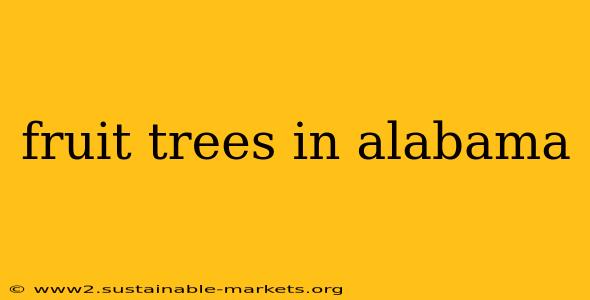Alabama, with its varied climates ranging from the humid subtropical south to the more temperate north, offers a surprisingly diverse range of options for home fruit growers. Choosing the right fruit tree for your specific location is key to a bountiful harvest. This guide explores popular fruit tree varieties that flourish in Alabama's unique conditions, along with essential tips for successful cultivation.
Understanding Alabama's Microclimates
Before selecting your fruit trees, understanding your specific microclimate is crucial. Alabama's climate zones influence which fruits will thrive. Factors like average temperatures, chill hours (hours below 45°F), and frost dates significantly impact fruit tree growth and fruiting. Coastal areas experience milder winters and longer growing seasons compared to the northern regions, which experience more pronounced temperature fluctuations and shorter growing seasons.
Chill Hours: A Key Consideration
Chill hours are a critical factor when selecting fruit trees. Many fruit trees require a specific number of chill hours to break dormancy and produce fruit properly. Northern Alabama generally experiences more chill hours than the southern part of the state. Choosing a variety suited to your region's chill hour accumulation is essential for successful fruit production.
Popular Fruit Trees for Alabama Gardens
Alabama gardeners enjoy a wide selection of fruit trees. Here are some of the most successful options:
Stone Fruits:
- Peaches: Peaches are a beloved Alabama staple, with many varieties suitable for different chill hour requirements. Look for varieties adapted to your specific region's chill hours. 'Contender' and 'Redhaven' are often recommended for their disease resistance and reliable yields.
- Plums: Plums, like peaches, come in numerous varieties with varying chill hour needs. 'Santa Rosa' and 'Methley' are known for their delicious fruit and relatively good disease resistance.
- Nectarines: These fuzzy-free peaches are increasingly popular. Similar to peaches and plums, selecting a variety suited to your region's chill hours is essential.
Pome Fruits:
- Apples: While apples may require more attention in Alabama's warmer climates, certain varieties thrive with proper site selection and care. Look for disease-resistant varieties like 'Anna' or 'Dorsett Gold.' Consider using rootstock that promotes dwarfing for easier management in warmer climates.
- Pears: Similar to apples, pear trees require careful consideration of chill hours. Select varieties known for their adaptability to warmer conditions.
Other Fruit Trees:
- Figs: Figs are exceptionally well-suited to Alabama's climate, thriving in both hot and humid conditions. They require minimal care and produce an abundance of sweet fruit.
- Citrus (in Southern Alabama): In the milder southern regions of Alabama, certain citrus fruits like satsumas and some types of oranges can be successfully grown. However, protection from frost is essential.
Tips for Successful Fruit Tree Cultivation in Alabama
- Site Selection: Choose a location with full sun (at least 6-8 hours daily) and well-drained soil.
- Soil Preparation: Amend heavy clay soils with organic matter to improve drainage and fertility.
- Watering: Consistent watering is crucial, especially during dry periods, particularly for young trees.
- Fertilization: Regular fertilization provides essential nutrients for healthy growth and fruit production. Follow package instructions for appropriate amounts.
- Pest and Disease Management: Monitor for pests and diseases and take preventative measures as needed. Proper pruning and sanitation can significantly reduce pest and disease problems.
- Pruning: Regular pruning promotes healthy growth and maximizes fruit production.
Conclusion
Growing fruit trees in Alabama can be a rewarding experience, offering fresh, homegrown fruit for your family to enjoy. By carefully considering your region's specific climate, selecting appropriate varieties, and following proper cultivation practices, you can create a thriving fruit orchard in your Alabama backyard. Remember to consult with local agricultural extension offices for specific recommendations for your area. Happy gardening!

